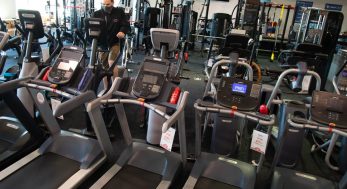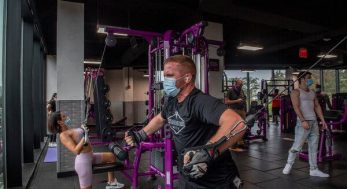The inverted row is a core training staple that can build size and strength in your back without picking up a weight (other than yourself)—but are you sure you’re even doing the exercise correctly?
For this basic gym necessity, you shouldn’t settle for anything other than perfect form—especially because it’s such a simple, essential movement that should serve as one of the centerpieces of your training plan. Let Men’s Health fitness director Ebenezer Samuel, C.S.C.S. and associate fitness editor Brett Williams guide you through the move’s subtleties, saving you from the bad habits that are keeping you from unlocking your fitness potential.
Before you slide under the bar and get ready to pull yourself up, take note that it’s extremely important to pay attention to the subtleties of the movement here. You’ll miss out on the potential back gains if you’re not focused on your full body position—and there’s more to the pull than you might think.
Squeeze Your Glutes
Eb says: The inverted row is more than a back exercise; it’s a total-body move, and a great way to teach your body proper posture. You’re focusing on attacking your lats and mid-back with the row motion, but you need to create tension throughout the rest of your body too.
When you set up for the row, you want to create a straight line from torso through feet, and that requires more work than you think to keep your entire midsection in proper position. You know by now to keep your abs tight, but in truth, that’s not going to give you that straight line. You’ll need to squeeze your glutes too, to drive your pelvis and hips into a neutral position. Keep your glutes and abs tight for the entire life of the set.
Squeeze Your Shoulder Blades
Eb says: Before you start rowing up, make sure you squeeze your shoulder blades. That’s going to pull your shoulder joints back into the sockets and create proper room for your rotator cuff tendons to work. You’re also honing our pushup form when you do this—an inverted row position is essentially an upside-down pushup.
Pull the Bar to Your Chest
Eb says: Once you begin to row upwards, your goal is to touch the bar to your lower chest. Notice how I said that: You’re pulling the bar to your chest, not pulling your chest to the bar. Work to think of it this way, because that’ll help keep you focused on owning that tight, board-like body position.
Your overall goal is to connect chest and bar, but if you think of pulling your chest to the bar (instead of the way I’m suggesting), you’ll find yourself doing too much to get to the bar and taking the emphasis off your back. You’ll start to arch your back to cheat towards the bar, or you may use a “mini-kip,” using a hint of hip action to create some momentum towards the bar. Neither of those things is helping you really attack your rhomboids and lats. Think of keeping your entire body tight (and squeezing those glutes!) and then pulling the bar to your chest, and your form will be tighter.
Go As High As You Can
Eb says: Don’t chase the random standard of bar touching body. Not everyone will get their torso to the bar on the inverted row; if you’re a few feet short, that’s okay. Touching your chest to the bar is as much about back strength as it is about chest flexibility and shoulder mobility.
If you have a desk job, even if you’re strong as heck, the “full”motion here may be harder than you think. But don’t push it; if you’re pushing past your natural range, you run the risk of the head of the humerus gliding forward to complete the motion (instead of your muscles actually doing the work). Instead, go as high as you can, and once you’ve reached that point, pause and squeeze your back muscles. Then focus on regularly stretching your chest when you’re not doing inverted rows; gradually, your functional range of motion for the inverted row will improve.
Play With Grip Position
Eb says: The inverted row should be fun. It’s an exercise with a ton of applications, and you can do it almost anywhere and on anything (think barbell, tree branch, etc.).
Work to learn a standard double-overhand grip at about shoulder-width, but integrate other bits too: Try mixed grips, underhand grips, wide grips, and narrow grips. You’ll hone forearm strength, add shoulder mobility and slightly alter the overall core demands and mid-back demands on your body.


